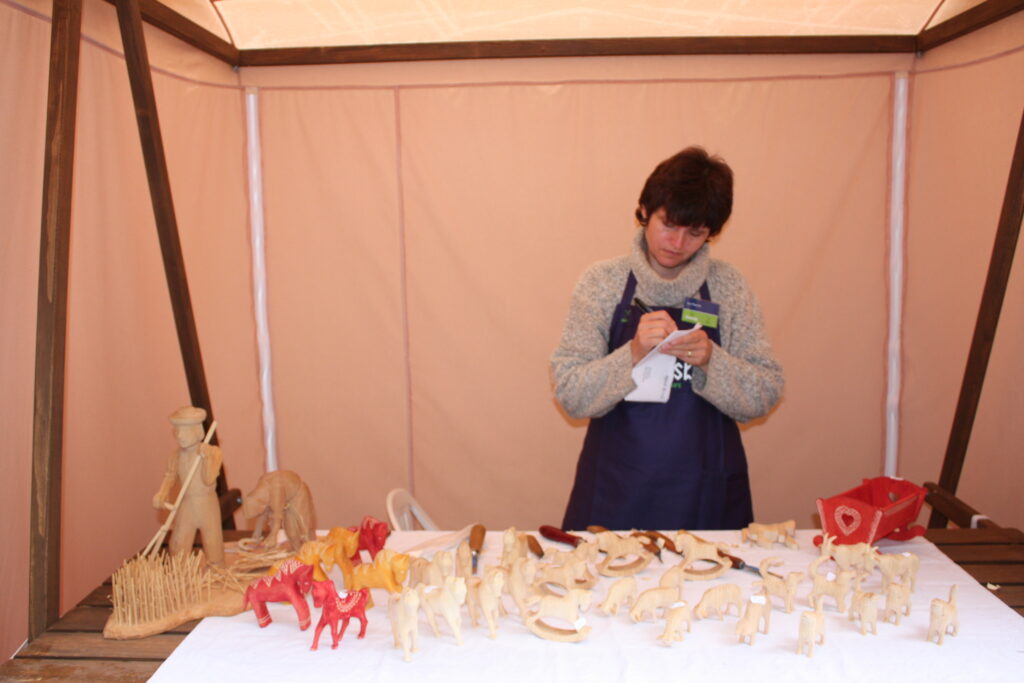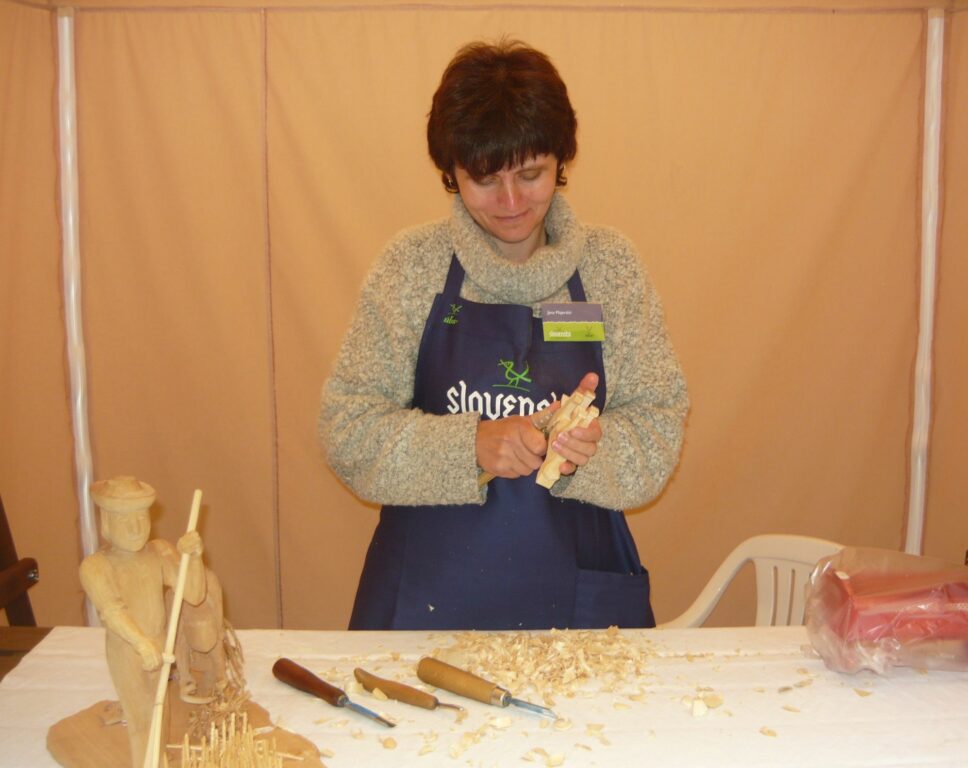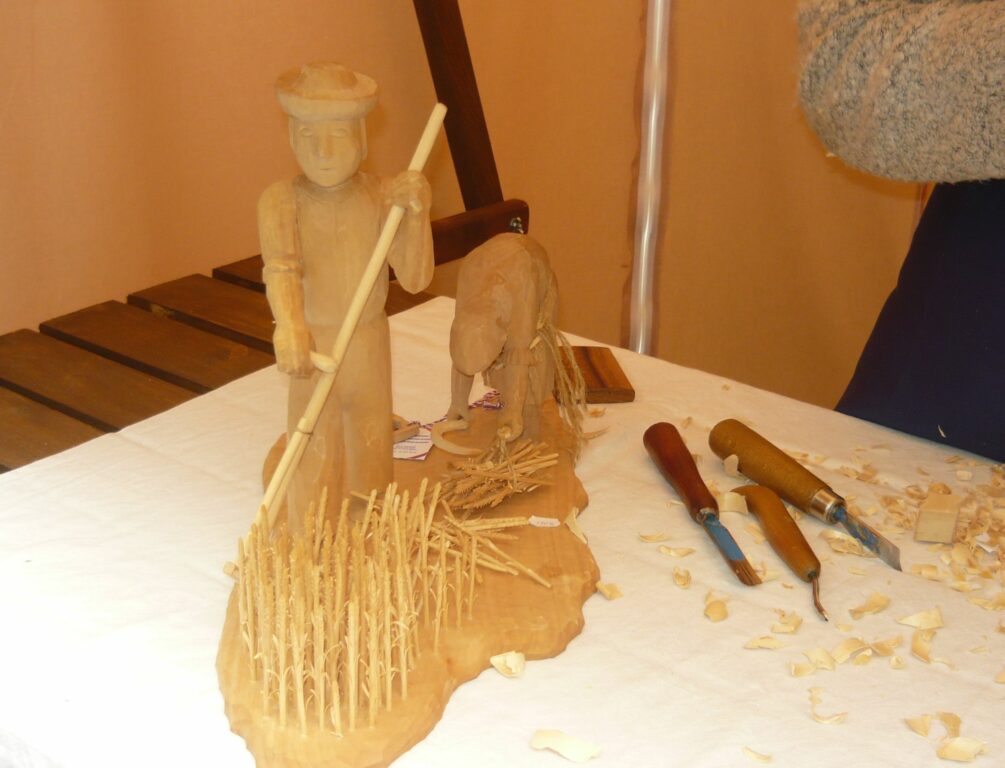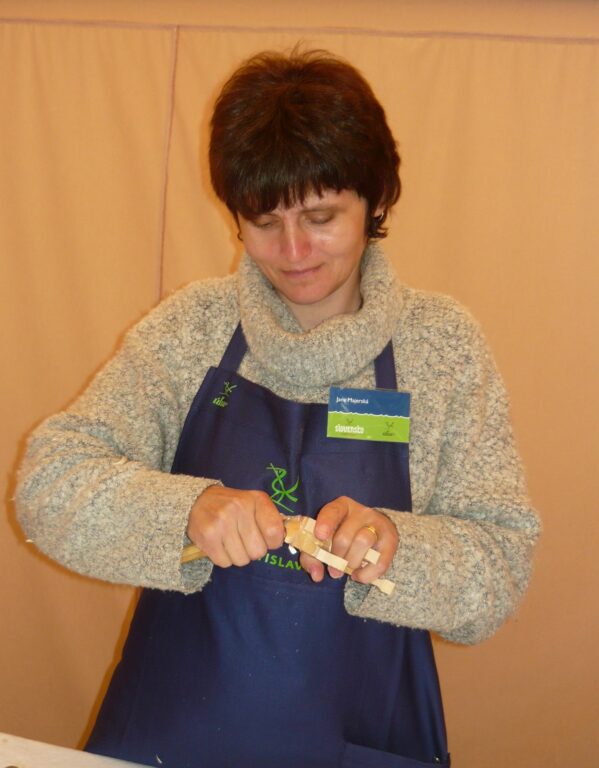She grew up with wood alongside her father, the carver Július Katina. As a child, she spent hours on end in his workshop, unknowingly fulfilling his desire for a son named Ján who would walk in his footsteps. She still remembers how, for example, he turned on the lathe and she always knew which chisel to hand him. Or the...
She grew up with wood alongside her father, the carver Július Katina. As a child, she spent hours on end in his workshop, unknowingly fulfilling his desire for a son named Ján who would walk in his footsteps. She still remembers how, for example, he turned on the lathe and she always knew which chisel to hand him. Or the noble feeling when he painted a nativity scene and brought home the gold paint… It’s no wonder she wanted to practically follow in his carving art. At first, he was reluctant to give her a knife, but when he saw that she was constantly drawn to it and that she handled it well, there was no turning back.
Initially, she decorated her mother’s flower pots with carved sticks, gifted classmates with small crafted pieces at school, and with the help of boys and her father, she made functional wooden guns that she also embellished ornamentally. Everything led to her studying at a secondary art school, but she was not recommended due to attending religion classes. However, even while studying at the hotel academy, her love for wood never left her and fully blossomed again during maternity leave, spending days and nights carving.
Initially, she took over her father’s assortment, which towards the end of his work was predominantly in a natural finish. She focused mainly on small zoomorphic sculptures, Central Slovak ladles, and nativity scenes. However, as her father aged and was less active in carving, she herself felt the need to do things differently. The first thing she adjusted to her style were the figurines in the nativity scene and gradually other items in the assortment. However, she still remains faithful to her father with the sheep and a small type of nativity scene.
Encounters with the artist Janka Menkynová from ÚĽUV influenced the direction of her work, who even as an artist recommended painting her products. She agreed, which opened the doors to enriching ornamental decoration, now visible primarily in variations of the kyjatic patterns. Traditional ornamentation – not only aesthetically, but also philosophically – is a strong source of inspiration for her. In this regard, she values the work of ethnologist Oľga Danglová and graphic designer Tomáš Kompaník.
Her assortment now includes, in addition to the mentioned animals and various types of nativity scenes, statues of saints (including larger ones), ladles, pestles, cutting boards, pendants, mirror frames, various children’s toys, mostly carved from lime wood. She sources and processes the wood herself, from cutting to drying. After cutting out the rough shape on her pieces, she works – as the old masters did – with a traditional knife, supplemented as needed with chisels. She decorates primarily with chip carving and notch cutting, colors with painting and staining, surface protects with beeswax or linseed oil, leaving products intended for the youngest children in their natural finish.
Jan Majerská’s wood has sustained her throughout her life. For many years, she has been a lecturer for carving courses for children and adults at ÚĽUV and other venues. The public knows her from many craft events and solo exhibitions. Among them, we can mention the exhibition “Nativity Scenes” (2020) in Bratislava and “Lines in the Work of Jana Majerská” (2023) in Tatranská Lomnica. Her son Ján also follows in her footsteps, as his work with wood has captured him just as it has her since childhood. Thus, her father’s long-standing desire for a male successor has been fulfilled generationally, but she has taken it one step further.
In 2020, she was awarded the title of Master of Folk Artistic Production in the field of carving.
For more information about the artist, refer to the articles “Inspired by Ornament” (RUD 3/2019), “Blessing of Wood” (RUD 1/2021), and “Wooden Variations” (RUD 2/2021).




